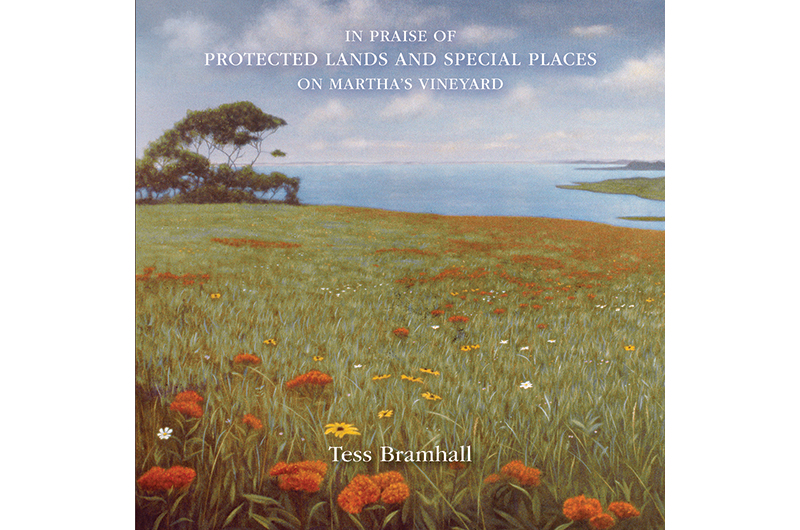We recently caught up with Tess Bramhall to talk about In Praise of Protected Land and Special Places on Martha’s Vineyard (Land Protection Fund for Martha’s Vineyard, $27). The new book, which can be used as an introduction to twenty-one public treasures on the Vineyard, is available at Island bookstores.
MVM: How did you first become interested in Island conservation?
Tess Bramhall: It started with my mother. We lived in the countryside in Delaware, and whenever someone was going to sell their land and maybe have it developed, she would try to get together with the people and convince them that the land should be in some way preserved. She was always trying to preserve the natural beauty, the natural resources. It wasn’t her life’s work, it was just a passion. So I’ve been following along that line.
My husband Kib came to Martha’s Vineyard as a young man in 1945. He arrived with his mother just at the end of the Second World War. He is a great fisherman, so he got to know the shorelines in particular. Then we married in 1956, and that’s when he first brought me to the Vineyard. Later on I joined the Vineyard Conservation Society. There were a few conservation groups at the time, but there was a lot of overlap in their approach, so we started a partnership [to help coordinate efforts], and I was one of the founders of that partnership. The groups, many of them, still exist and they work together very effectively in discovering how they can approach different land owners and different towns. That was not the beginning of my involvement, but it was a big step.
MVM: You write about an imbalance of development and nature. What do you mean by that?
TB: A healthy balance between the needs of both our land and our people is essential for our beloved Island. And that is really the heart of the book. If you’re thinking about where conservation fits into the puzzle of competing causes, like housing growth, I think there needs to be a healthy balance between the two. They need to work together, and think about the Island as a whole. In the last 400 years the Island population has grown steadily, whereas the Island itself has become a bit smaller through constant erosion by the sea. The population needs are encroaching on the needs of the land. And that imbalance needs to be addressed. That’s as strong as I can make it, really, but it does need to be addressed.
People speak for themselves, but the land cannot. It speaks through its beauty but cannot talk. So we who love Martha’s Vineyard must speak for it, must advocate for its survival as we know it. And we have to find that balance.
MVM: Where does the balance stand today?
TB: Martha’s Vineyard is 40 percent conserved. We are extremely lucky for that. But 30 percent has been developed so far and we are engaged in a struggle to determine the fate of the remaining land. Imagine if that remaining 30 percent was developed, what the Island would be like. I don’t want to be negative, but it would lose its softness, its beauty.
MVM: You also write that preserving land is about more than just enjoying nature.
TB: Yes, it is just as much about a preservation of our natural resources. Our water, our farmland, our forest. If you talk to people about the land, for most people, it is just an abstract word. What I am trying to do is take the land and define it, define its purpose in a physical way and an emotional way. I think many people take the land and all of its resources for granted. I want people to look at it for what it gives us. It gives us everything.
MVM: What is your favorite protected land on Martha’s Vineyard?
TB: I honestly would say that I do not have one. I appreciate them all for the various different gifts they give you. All of them have something special to offer.





